Kerala SSLC Board question papers for Class 10th Social Science 2020 solutions in pdf is considered as one of the most efficient ways to prepare for an upcoming exam. Students who have solved the previous year question papers will be more confident to write the Class 10 exam. They will be more acquainted with the type of questions that one can expect for the final exams. All the solutions are solved by our subject specialist who have deep knowledge in the field of Social Science. For students, it is equally important to score good marks in their Social Science exam to uplift their overall percentage. Download the solutions from the link provided below and refer it while solving the previous year question papers.
Kerala SSLC or Class 10 Social Science Question Paper 2020 with Answers – Free Download
Download Kerala SSLC 2020 Social Science Question Paper PDF
Download Kerala SSLC 2020 Social Science Solutions PDF
KBPE Class 10th Social Science Question Paper With Solution 2020
1. The highest range of Himalayan Mountains:
(a) Ladakh
(b) Himachal
(c) Shiwalik
(d) Himadri
Answer: b
2. Name the founder of the political party; Forward Bloc.
(a) Jai Prakash Narayan
(b) Subhas Chandra Bose
(c) Bhagat Singh
(d) Aruna Asaf Ali
Answer: b
3. Name the institution constituted at the national level to prevent corruption at administrative, bureaucratic and political level:
(a) Lokayukta
(b) Ombudsman
(c) Lokpal
(d) State Vigilance Commission
Answer: c
4. The first public sector Iron and Steel plant in lndia
(a) Indian Iron and Steel Company
(b) Hindustan Steel Limited
(c) Visweswarayya Iron and Steel works Limited
(d) Tata Iron and Steel Company
Answer: b
5. Co-operation, self-help and mutual help are the working principles of:
(a) Development Banks
(b) Mahila Banks
(c) Payment Banks
(d) Co-operative Banks
Answer: d
6. Link column ‘A’ with appropriate items from Column ‘B’
|
A |
B |
|
G.P Pillai |
Savarna Jatha |
|
Dr. Palpu |
Nivarthana Prakshobham |
|
C. Keshavan |
Malayali Memorial |
|
Mannath Padmanabhan |
Ezhava Memorial |
Answer:
|
A |
B |
|
G.P Pillai |
Malayali Memorial |
|
Dr. Palpu |
Ezhava Memorial |
|
C. Keshavan |
Nivarthana Prakshobham |
|
Mannath Padmanabhan |
Savarna Jatha |
7. Mention the features of the cold weather seasons in India.
Answer: The features of the cold weather seasons in India are:
- The cold weather season in India begins during mid November in Northern India and stays till February. December and January are the coldest months.
- During the cold season, the days are warm and nights are cold. When temperature decreases, frost is commonly experienced in Northern India.
- The cold season in most parts of the country is the dry season as Northeast trade winds blow from land to sea.
- Many cyclonic disturbances occur over northern India during this time. These results in rainfall during winters and snow fall in the Himalayan regions.
8. Elucidate the importance of the Right to Information Act, 2005.
Answer: Right to Information Act, 2005 is one of the most important acts which empowers ordinary citizens to question the government and its working. This has been widely used by citizens and media to uncover corruption, progress in government work, expenses related information, etc. All constitutional authorities, agencies, owned and controlled, also those organisations which are substantially financed by the government comes under the purview of the act. The act also mandates public authorities of union government or state government, to provide timely response to the citizens’ request for information. The act also imposes penalties if the authorities delay in responding to the citizen in the stipulated time.
9. Write a note on the importance of the study of Sociology.
Answer: Sociology is the study of society, patterns of social relationships, social interaction, and culture that surrounds everyday life. Importance of Sociology:
- Helps make informed decisions
- Aids in understanding diversity
- Shapes social and public policies and practices
- Develops critical thinking
- Expands career opportunities
10. Write a short note on Coal production in India
Answer: Coal is the black, soft, amorphous allotrope of carbon mostly used as energy source for industries. Occurrence of coal in India –
- India is in 5th position for coal reserves in the world.
- In India, coal reserves are abundant in states of Jharkhand, West Bengal, Madhya Pradesh, Odisha, Chhattisgarh, Bihar, Telangana & Maharashtra.
- Out of these about 30% reserves are accumulated in Jharkhand only.
- Jhariya coal mine is the biggest coal mine in India.
11. What are the functions of the Reserve Bank of India?
Answer: The functions of the Reserve Bank of India are:
Monetary Authority
- Implementation of monetary policies.
- Monitoring the monetary policies
- Ensuring price stability in the country considering the economic growth of the country
Regulator and Administrator of the Financial System
- The RBI determines the comprehensive parameters of banking operations.
- These methods are responsible for the functioning of the country’s banking and financial system. Methods such as:
- License issuing
- Liquidity of assets
- Bank mergers
- Branch expansion, etc.
Managing Foreign Exchange
- RBI manages the FOREX Reserves of India.
- It is responsible for maintaining the value of the Rupee outside the country.
- It aids foreign trade payment.
Issuer of currency
- The Reserve Bank of India is responsible for providing the public with a sufficient supply of currency notes and coins.
- The quality of currency notes and coins is also taken care of by the RBI.
- RBI is in charge of issuing and exchanging currency and coins.
- Also, the destruction of currency and coins that are not fit for circulation.
12. Explain the Champaran and Kheda Satyagrahas involved by Gandhiji.
Answer: Champaran Satyagraha (1917)
- The first civil disobedience movement by Gandhi in the freedom struggle.
- Persuaded by Rajkumar Shukla, an indigo cultivator, Gandhi went to Champaran in Bihar to investigate the conditions of the farmers there.
- The farmers were suffering under heavy taxes and an exploitative system. They were forced to grow indigo by the British planters under the tinkathia system.
- Gandhi arrived in Champaran to investigate the matter but was not permitted by the British authorities to do so.
- He was asked to leave the place but he refused.
- He was able to gather support from the farmers and masses.
- When he appeared in court in response to a summons, almost 2000 locals accompanied him.
- The case against him was dropped and he was allowed to conduct the inquiry.
- After peaceful protests against the planters and landlords led by Gandhi, the government agreed to abolish the exploitative tinkathia system.
- The peasants also received a part of the money extracted from them as compensation.
- Champaran struggle is called the first experiment on Satyagraha by Gandhi and later Ahmedabad Mill Strike and Kheda Satyagraha occurred.
- It was during this time that Gandhi was given the names ‘Bapu’ and ‘Mahatma’ by the people.
Kheda Satyagraha (1918)
- 1918 was a year of failed crops in the Kheda district of Gujarat due to droughts.
- As per law, the farmers were entitled to remission if the produce was less than a quarter of the normal output.
- But the government refused any remission from paying land revenue.
- Sardar Vallabhbhai Patel, under Gandhi’s guidance, led the farmers in protest against the collection of taxes in the wake of the famine.
- People from all castes and ethnicities of the district lend their support to the movement.
- The protest was peaceful and people showed remarkable courage even in the face of adversities like confiscation of personal property and arrest.
- Finally, the authorities gave in and gave some concessions to the farmers.
13. What is Budget? Explain three types of budget.
Answer: A budget is an approximation of revenue and expenses over a defined future time frame; it is organized and reconceptualized on a periodic basis. Budgets can be outlined for a person, a family, a group of people, an entity, a country, a multinational organization, a government or just anything else that makes and spends money. At institutions and organizations, budget is an internal mechanism inculcated by the management and is often not required for reporting by external parties.
The three types of budgets are:
(i) Balanced Budget – A balanced budget is a condition in financial planning or the budgeting procedure where total revenues are equivalent to or greater than the total expenditure. A budget can be contemplated balanced in experience after a complete year’s account of revenues and expenses have been recorded. A company’s budget for the upcoming year can be called balanced based on anticipations or approximate values.
(ii) Surplus Budget – A surplus budget is a condition when income or receipts overreach costs or outlays (expenditures). A surplus budget normally refers to the financial conditions of the governments. However, individuals choose to use the term ‘savings’ rather than ‘budget surplus.’ Surplus is a manifestation that the government is being effectually operated and regulated.
(iii) Deficit Budget – A budget deficit materializes when expenses overreach revenue and it is a symptom of financial health. The government normally uses this term to its spending instead of entities or individuals. Accrued government deficits form national debt.
14. Distinguish between the Ryotwari System and the Mahalwari System
Answer: The following are the differences between the Ryotwari and Mahalwari system of land revenue.
- Introduced by Thomas Munro in the year 1820, the Ryotwari system was a land revenue system in which the farmers directly paid the revenue to the state whereas, in the Mahalwari system, the land revenue was collected by the headmen of the village, and he was responsible for paying it the state.
- In the Ryotwari system, the Ryot or the individual cultivator has a full right on the sale, transfer and leasing of the land. Whereas, in the Mahalwari system, an entire village was converted into a big unit of revenue collection and treated as one unit for the collection of revenue.
15. Mark and level the given geo information in the outline map of India provided.
(A) River Kaveri
(B) Chotanagpur Plateau
(C) Kuchchh Peninsular
(D) Karakoram Range
Answer: Activity be done by yourself.
16. Write a short note on the states reorganisation of Independent India.
OR
Explain how Raja Rammohan Roy tried to modernise Indian Society?
Answer: Soon after independence, 571 princely states were reorganised and merged together to form 27 states. This reorganization was done based on political and historical considerations. This reorganization of states was done on a temporary basis. The State Reorganization Commission formed in 1953 gave its report in 1955 to reorganize states into 16 states and 3 union territories. The Government divided the country into 14 states and 6 union territories under the State Reorganization Act that was passed in November 1956. The State Reorganization Commission recommended that “it is neither possible nor desirable to reorganise States on the basis of the single test of either language or culture, but that a balanced approach to the whole problem is necessary in the interest of our national unity.” Later when the states were reorganized one could say the basis of reorganization could be linguistic, ethnic or administrative purposes. Reorganizing states on the basis of language would not only help in ease of administration but also the development of vernacular languages which was ignored by the British. Even cultural affiliations were taken into account, for example, Nagaland was created taking into account tribal affiliations. In the recent past Chhattisgarh and Jharkhand were created for better economic development in the respective regions.
Answer: Raja Ram Mohan Roy most famously known as the ‘Father of Indian Renaissance’ was one of the greatest social reformers of the Indian history.
Raja Ram Mohan Roy has immensely contributed to the social reformation movement. He founded the “Brahmo Samoj’, an important movement which aimed to eliminate the social evils prevalent in the Hindu society. It gained a lot of praise and support from different sections of the society. The Brahmo Samaj was a social institution based on Brahmoism.
Raja Ram Mohan Roy was against social practices like polygamy, child marriage, caste system, untouchability, superstitions and use of intoxicants. He had a modern outlook to social lifestyle and supported widow re-marriage, inter-caste marriage and women empowerment. Raja Ram Mohan Roy was one of the first social reformers who openly criticized the prevailing social evils of the Hindu society.
17. What is Standard Time? Explain how Indian Standard Time is determined?
OR
How are Cyclones formed? Differentiate between the Cyclones in the Northern and Southern Hemisphere.
Answer: Standard time is used to mean the reference time for a particular area. It is the local time of the standard meridian passing through the region or country.
The Indian Standard Time (IST) has been decided according to the 82° 30′ E longitude, which passes through Mirzapur (near Allahabad, Uttar Pradesh). This longitude passes through the middle of the country with reference to its longitudinal extent. The local time at this longitude has been selected as the standard time of the whole country. When the sun is directly overhead on this longitude, then it is assumed that it is 12 noon everywhere in India. There is no difference of more than one hour between the local time at 82° 30′ E and other places in the country.
Answer: When it comes to the formation or strengthening of a cyclone, Cyclogenesis plays a crucial role. It is an umbrella term to identify several processes that result in a cyclone. Tropical cyclones are formed over warm ocean water near the equator. Warm moist air near the surface of the ocean rises upwards. This creates a low-pressure area near the surface. This results in the movement of cooler air from surrounding areas into the low-pressure area. Now even this cool air becomes warm and moist and rises up. The above cycle keeps continuing. The warm moist air which rises up, cools the water in the air, resulting in the formation of clouds. This whole system of clouds and winds spins and grows. This entire cycle continues resulting in a cyclone.
18. Who founded the University of Visva Bharati? What were its peculiarities?
OR
Identify any three Iron and Steel Industries founded in India with the assistance of foreign countries.
Answer: Visva-Bharati is a public research central university and an Institution of National Importance located in Santiniketan, West Bengal, India. It was founded by Rabindranath Tagore who called it Visva-Bharati, which means the communion of the world with India.
Answer: A few steel industries have collaborated with foreign countries for the importing raw materials and for exports. Korea and China are the main countries from where India imports cheap raw materials.
- The establishment of the Durgapur Steel plant, in West Bengal in 1956, was a result of its collaboration and assistance from British companies.
- The Rourkela Steel plant, in Odisha, was established in 1961 and was collaborated with German firms like Krupp and Demag.
- The Bokaro Steel Plant in Jharkhand started as a limited company in 1964 and was established in collaboration with the Soviet Union. Later, it was merged with the SAIL.
19. Territory is an important factor in the formation of a state. Substantiate the statement.
OR
Explain the role of morality in fostering civic consciousness.
Answer: Territory is the second essential element of the State. State is a territorial unit. Definite territory is its essential component. A State cannot exist in the air or at sea. It is essentially a territorial State. The size of the territory of a State can be big or small; nevertheless it has to be a definite, well-marked portion of territory.
20. Explain why the population studies are conducted.
OR
Explain the various circumstances where the consumers are exploited or cheated.
Answer: Population studies are conducted to understand the processes that influence the size, growth, characteristics, and distribution of human population. By analyzing birth rates, death rates, immigration patterns and actuarial tables of life expectancy, we hope to explain past trends and accurately predict the future.
Answer: Consumers are exploited in the market in the number of ways are
1) Underweight and under measurement – Sometimes the goods produced in the market are not properly measured or weighed. So sellers give these goods to the consumers less than weight or measurement to get more profit. This lead to financial loss to the consumers
2) Duplicate articles – In the names of branded product fake or duplicate articles of low quality are sold in the market. Duplicate items will not last long in the market because these are not manufactured according to the government specifications.
3) False information – Sometimes sellers mislead the consumers by giving the wrong information about the product such as its price, quality, expiry date, side effects on health and date of manufacture etc.
4) Artificial scarcity – Sometimes sellers create the artificial scarcity by hoarding the goods so that they can sell it later at high prices.
Answer: As per Gandhiji’s views, The basis of all activities is morality. Morality means the ability to recognize virtues from vices, accept virtues and to perform duties with utmost responsibility. It is the moral responsibility of each individual to perform the duty towards the society and the state.
Morality helps civic consciousness, whereas immorality destroys it. Creation of moral consciousness in all walks of life is the most effective way to foster civic consciousness. Civic consciousness is a creative state of mind.
21. Prepare a note on the topic ‘State and Citizen’
OR
The collective action of the people and their Cooperation is essential for Civic Consciousness. Explain with examples.
Answer: State – A state in a country considered as an organized political community controlled by one government. It comprises an executive, a bureaucracy, courts and other institutions. But, above all, a state levies taxes and operates a military and police force. States distribute and redistribute resources and wealth, so lobbyists, politicians and revolutionaries seek in their own way to influence or even to get hold of the levers of state power. States exist in a variety of sizes.
Citizen – A citizen is a member of a sovereign group of people that have certain rights and governments protect these rights or take advantage of them.
OR
To be Answered Soon
22. The relief in topographical maps are represented by contour lines.
(i) What are contour lines?
(ii) What is the colour of the contour lines in topographical maps?
(iii) What is Contour Interval?
(iv) What is the relationship between the spacing of contour and nature of slope?
OR
Substantiate the capability of Buffer analysis in Geographical Information System with examples. List the other analytical capabilities of GIS.
Answer i: Contours are lines on map joining places of same height – measured from the sea level. In other words all places on a contour line will have the same height from the sea level. Contour lines are also called isolines – lines joining places with some common features.
Answer ii: Brown colour
Answer iii: A contour interval is the vertical distance or difference in elevation between contour lines. Index contours are bold or thicker lines that appear at every fifth contour line. If the numbers associated with specific contour lines are increasing, the elevation of the terrain is also increasing.
Answer iv: Contour lines with wider spacing represent gentle slope, while the closer spaced contours indicate steep terrain. Evenly spaced contours represent a uniform slope.
23. List out the Acts for the protection of the consumers apart from the Consumer Protection Act, 1986.
OR
Explain how education helps in the development of a country.
Answer: The Acts for the protection of the consumers apart from the Consumer Protection Act, 1986 are:
- The Contract Act 1982
- The Sale of Goods Act 1930
- The Essential Commodities Act 1955
- The Agricultural Produce (Grading and Marking) Act 1937
- The Prevention of Food Adulteration Act 1954
- The Standard of Weights and Measures Act 1976
- The Trade Mark Act 1999
- The Competition Act 2002
- The Bureau of Indian Standard Act 1986
Answer: Education plays a crucial role in the overall development of a country. Through the education human gets the thinking skills and that thinking skills are used to convert the raw material into useful products. Education makes a country a developed and wealthy one. The system of education ensures an overall development in a country. A population utilizes it to make its country a developed one. At this point India is a developing country!
24. The apparent movement of the Sun is the basic cause for occurrence of seasons.
(i) What is the apparent movement of the Sun.
(ii) Compare Uttarayanam and Dakshinayanam.
OR
Answer the following questions related to atmospheric pressure.
(i) What is atmospheric pressure?
(ii) Name the instrument used for measuring atmospheric pressure.
(iii) How altitude, temperature and humidity influence atmospheric pressure.
Answer i: The apparent movement of the sun means the earth keeps on changing its position. The Earth keep rotating around its axis and hence keep changing its position with respect to sun
and we observe the apparent movement of the sun. Rotation on its own axis of earth results in creating day and night.
Answer ii: Uttarayanam – Summer Solstice is also known as Uttarayan. Uttarayan consists of Winter, Spring, and Summer. Positivity is the symbol of Uttarayan. It has longer days and shorter nights. Auspicious works are encouraged during Uttarayan. Uttarayan starts around 22nd December and lasts for 6 months till approximately June 21.
Dakshinayanam – Winter Solstice is also known as Dakshinayan. Dakshinayan comprises winter, autumn, and monsoon. Dakshinayan is associated with Negativity. It is associated with longer nights and shorter days. Auspicious works are discouraged during Dakshinayan. Dakshinayan begins around 21st or 22nd June.
Answer i: The weight of a column of air contained in a unit area from the mean sea level to the top of the atmosphere is called the atmospheric pressure. It is measured in force per unit area.
Answer ii: Barometer.
Answer iii: Altitude, temperature, and humidity influence the atmospheric pressure.
- Altitude: With an increase in the altitude, the length of the column of the overlying air on the surface of the earth decreases and hence the weight or the pressure exerted by the atmosphere also decreases.
- Temperature: When the atmospheric temperature increases, the air expands and loses density and similarly when the temperature decreases the air becomes denser and naturally increases.
- Humidity: Humidity refers to the quantity of water present in the atmosphere. Water vapour is lighter than air and hence it moves up. If the quantity of water vapour is more in a unit volume of air, then naturally the atmospheric pressure will be less. Thus, humidity and atmospheric pressure are inversely proportional.
25. Explain the factors that led to the American War of Independence.
Hint: Mercantilist Laws
Continental Congress
OR
Analyse the growth of Nazism in Germany
Areas to be considered:
Factors that helped Hitler to come to power in Germany
Policy of Hitler in Germany
Answer: The causes of the American Revolution can be outlined under two broad headings, namely:
- Fundamental Causes
- Immediate Causes
Fundamental Causes of the American Revolution:
- The attitude of Americans towards Britain: The people who were exiled to America had a natural feeling of discontentment towards the British Government.
- Unsatisfactory Administrative System: Friction between the people’s representatives and nominated executives caused trouble. The Governor-General was authorized to reject the Act of the Parliament. The salary of the Governor was to be borne by the colonial exchequer.
- Mercantilist Regulations: The American people were not satisfied with the prevalent commercial system. A number of regulations were passed by the British Parliament which restricted the scope of colonial exports and imports. For example, the colonists were forced to sell their goods only to English merchants and were allowed to buy foreign goods, only after paying duty at an English port.
- Influence of the Seven Years’ War: The seven years war had ended in victory for the British in North America which granted them control of French colonies in modern-day Canada. With it came the additional expenses of maintaining law and order in the new colonies. Expenses that were borne by the American colonies.
Immediate Causes of the American Revolution:
- Sugar Act,1764: The passing of the Sugar Act in 1764 by the British Parliament meant that duty was to be imposed on molasses imported by the colonists. The colonists, thus resorted to smuggling molasses, but their activities were curbed.
- Townshend Act (1767): Charles Townshend, proposed duties on colonial imports of glass, lead, paint, paper and tea. In 1770, Lord North took over as Prime Minister and removed the octroi from paper and glass but did not free tea. This agitated the Americans.
Answer: Nazism became popular after 1930 in Germany. The reasons for its popularity is listed below
- The harsh Versailles Treaty was a serious blow to the national prestige of the Germans and to the economy
- The economic situation was worsened by the Great Depression of 1929, which had severely affected the already fragile German economy. The inability of the Weimar Republic to remedy the situation only further inflamed public sentiments.
- The political scenario was not any better as the various political factions, such as the communists and socialists fought with each other that stalled any policy that would uplift the plight of the German people.
- It was in this background that Hitler would organise the fledgeling National Socialist German Worker’s party, otherwise known as the Nazi party into a mass movement.
- By implementing Nazi ideals, Hitler promised to undo the injustice of the Versailles treaty and restore the dignity of the German people, promising economic security and to build a strong German nation free from all foreign influences and ‘conspiracies’.
- He found strong support among the German middle class, who were threatened with destitution due to economic collapse that had shut down banks, businesses and factories.
- Nazi propaganda, along with Hitler’s powerful oratory skills, successfully portrayed Hitler as a saviour and Nazism as the means to deliver the German people from the distress of living in a time of acute economic and political crisis.

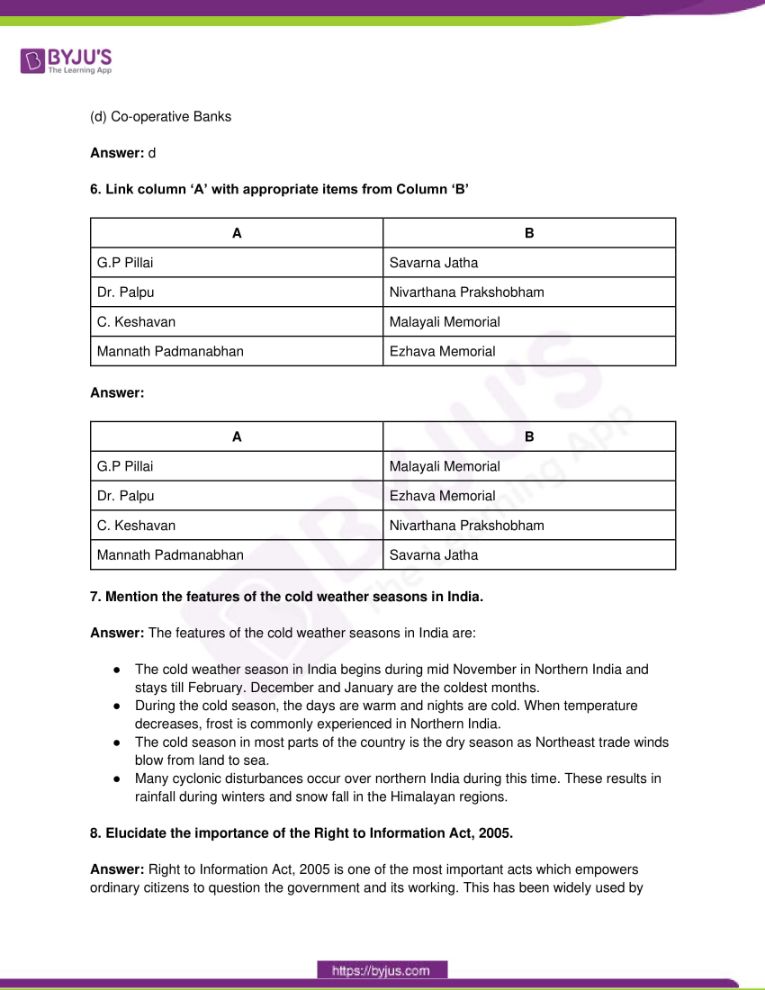

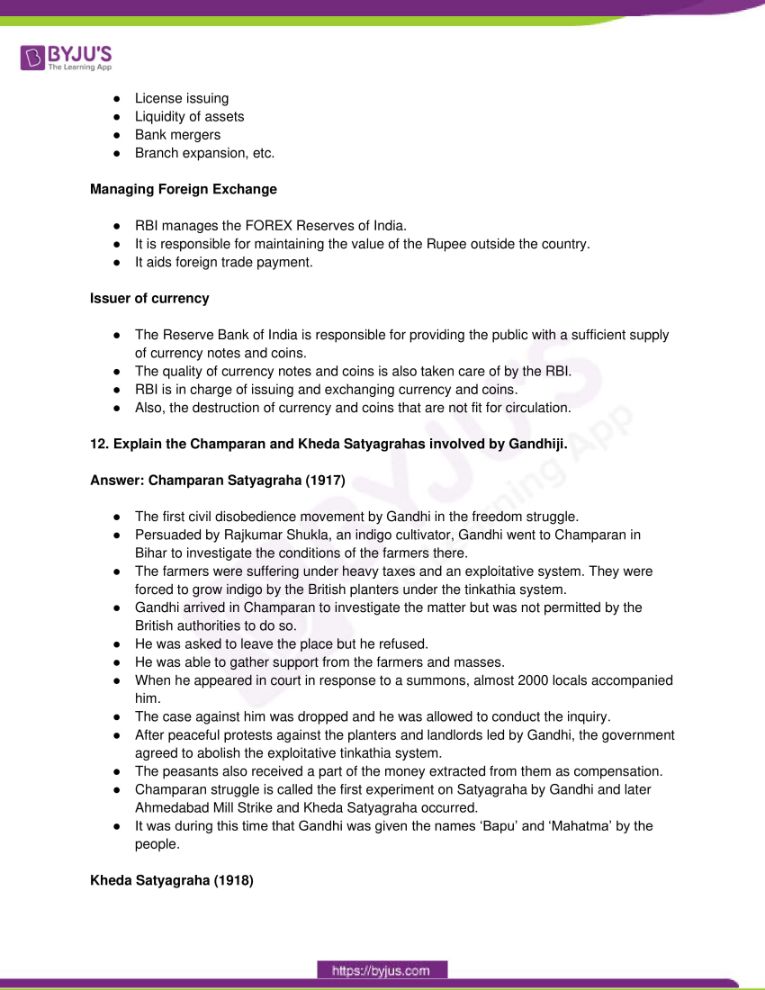
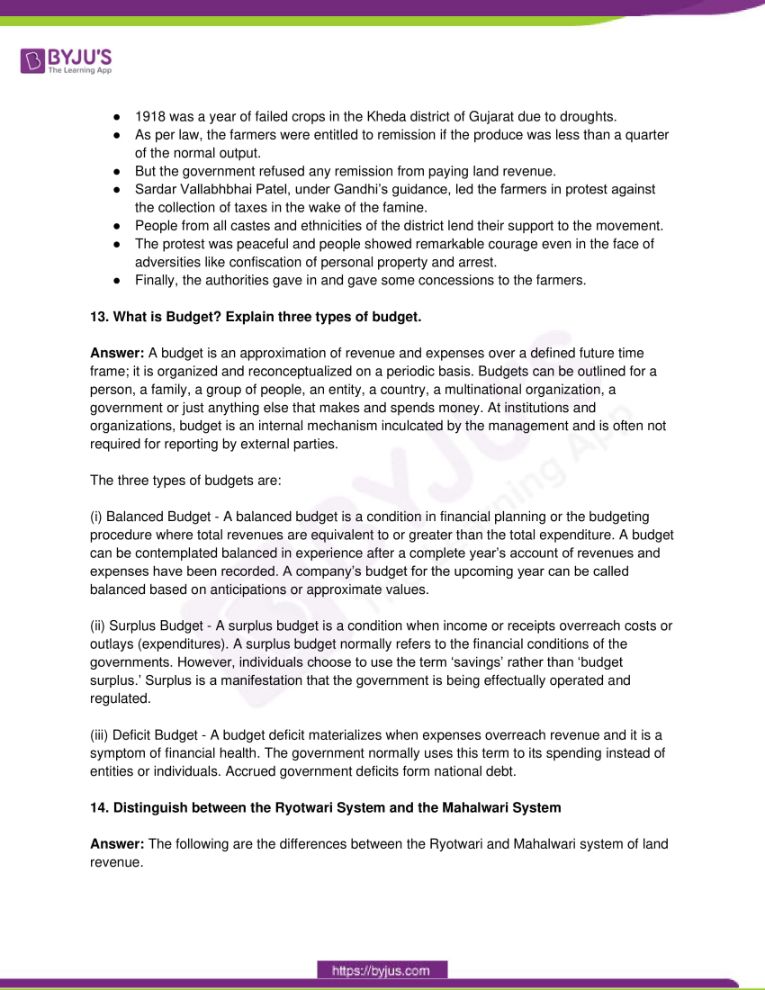
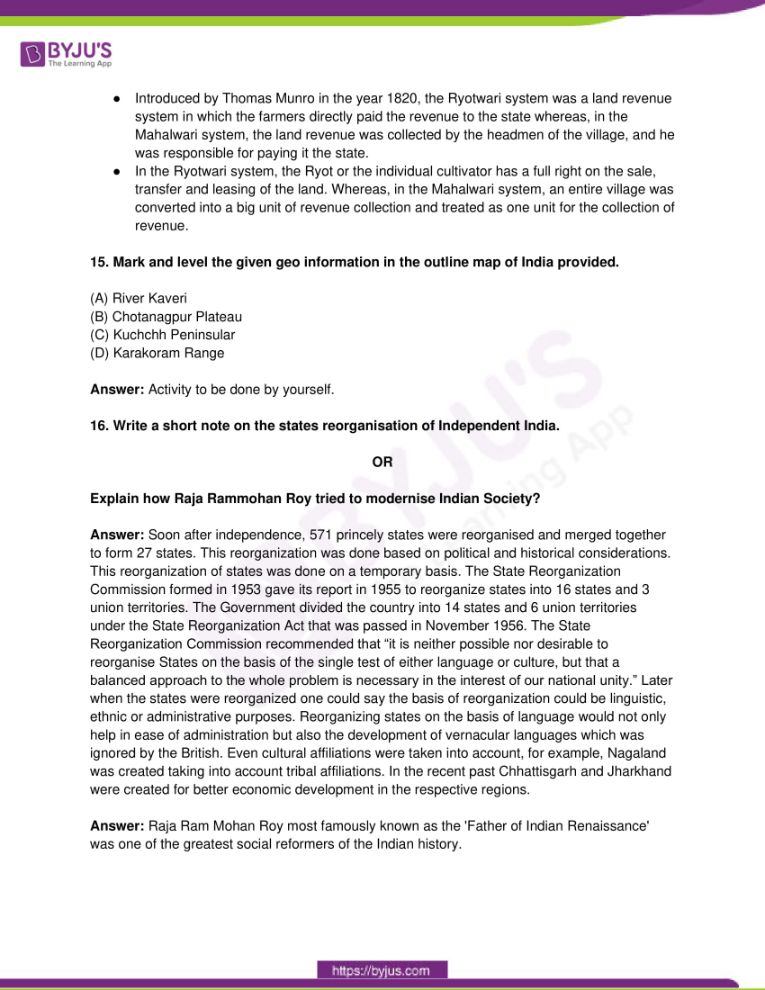
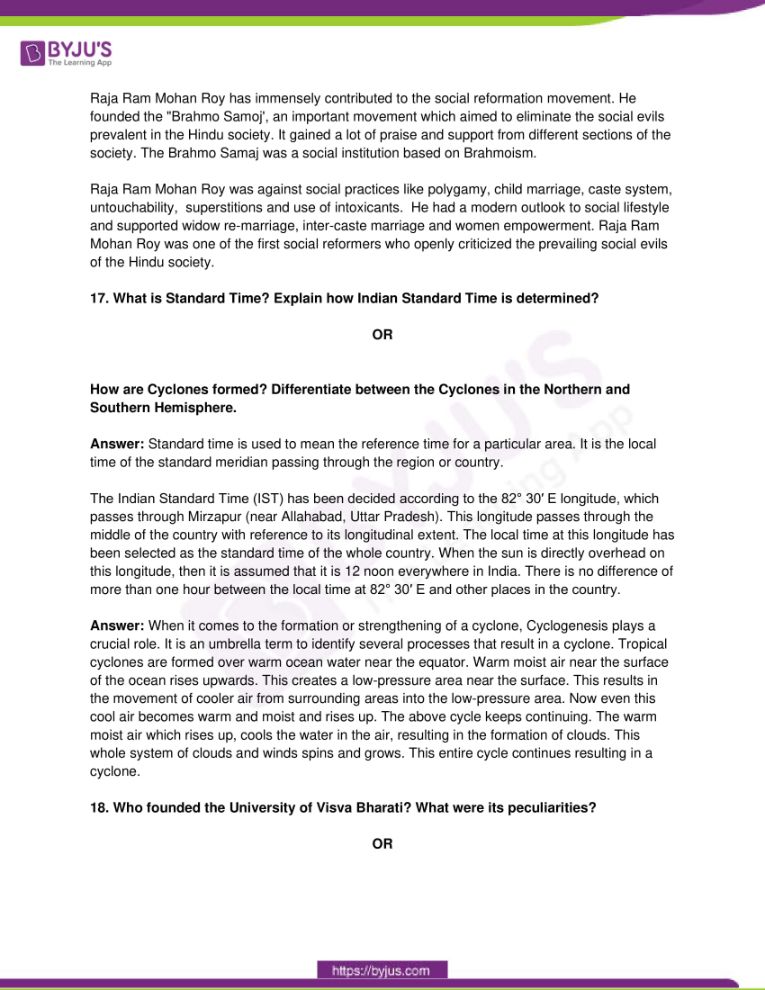



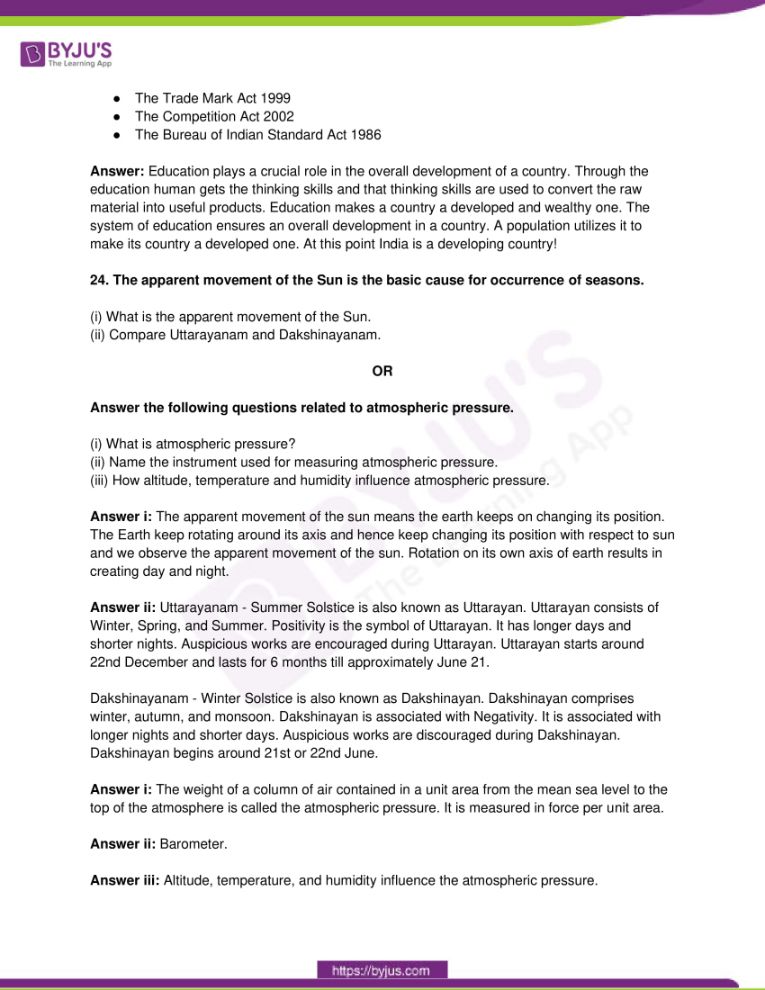
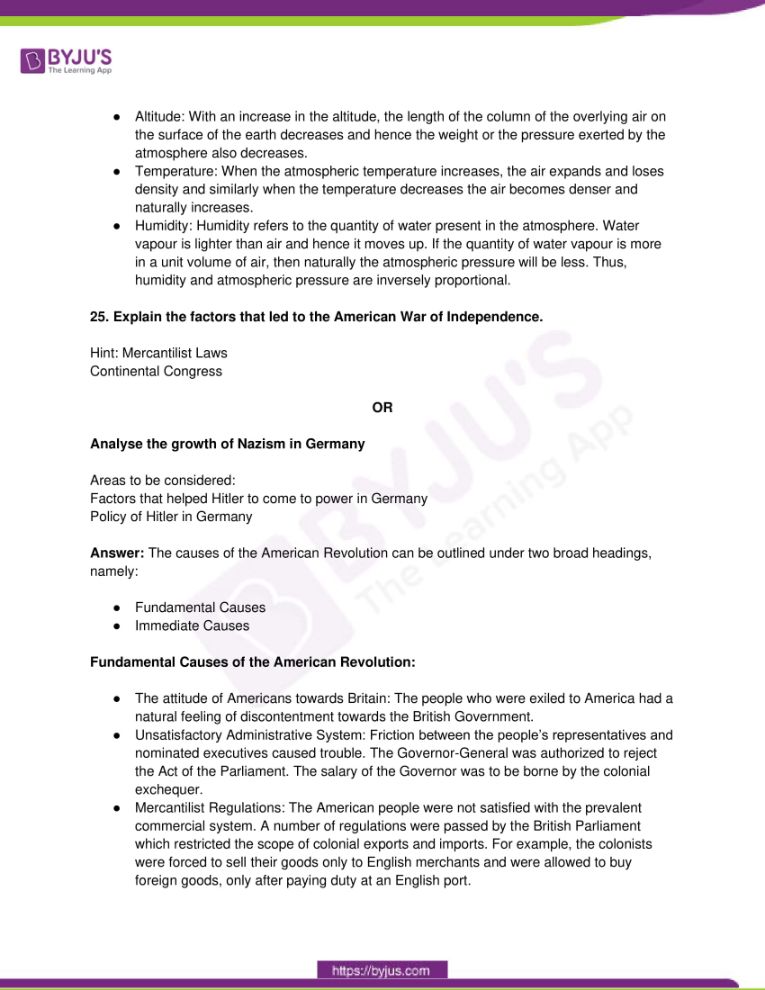
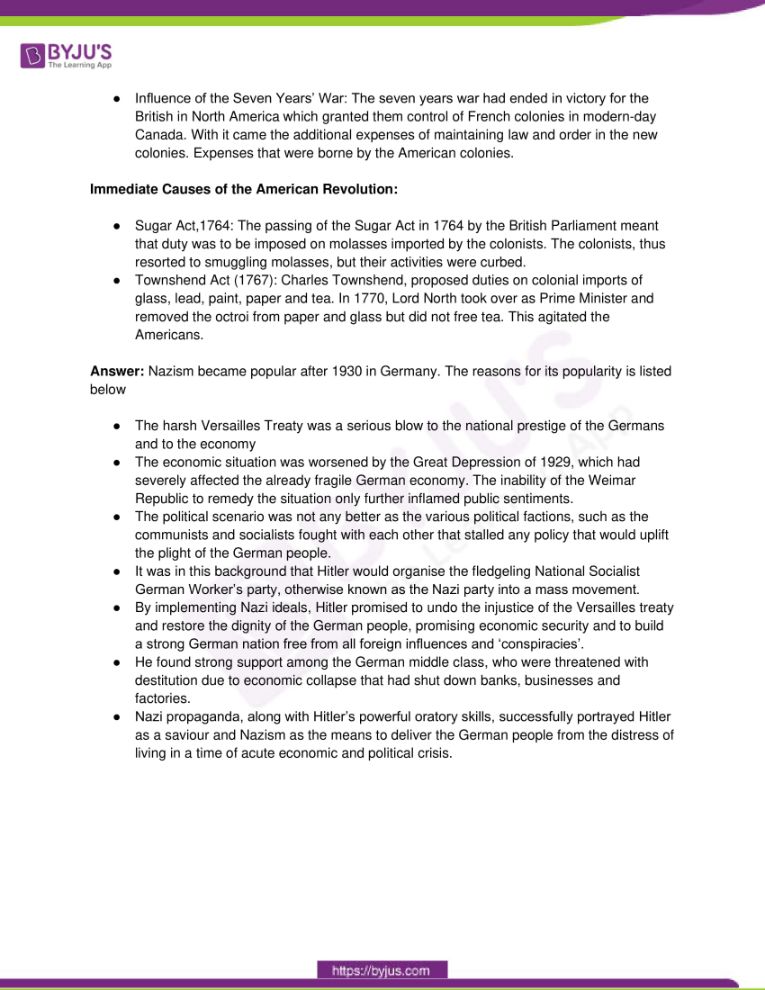
Comments